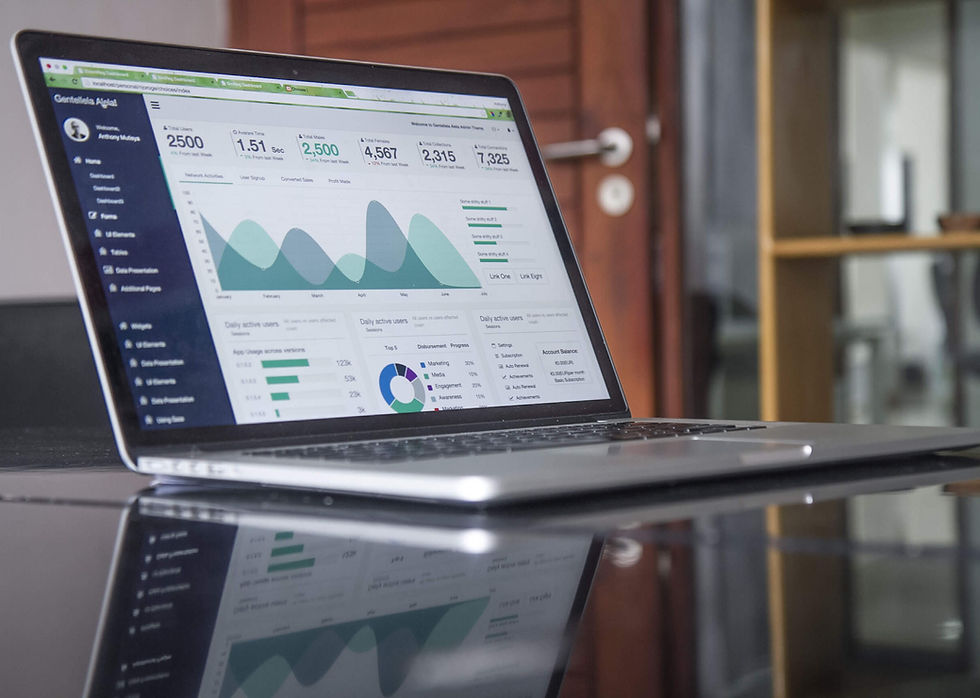Energy traceability data should be prioritized.
- Alexina Jackson

- Mar 17
- 5 min read

Data is (or should be) at the center of so many electricity stories today. Increasingly abundant data from AMI meters improve billing and load management and also support insights into customer consumption through disaggregation of behind-the-meter assets. Dynamic line rating technology and digital twins of the grid produce, combine, and visualize data about grid assets and power flow, sometimes alongside weather and vegetation data to mitigate fire and storm risks. Weather and asset data are also combined with market and regulatory data to produce insights into development and operations risks, and potential market prices.
The media highlight predictions of increasing demand for energy as large quantities of data are to be processed by data centers for machine learning (ML) and artificial intelligence (AI) advances. ML and AI have great potential today to improve system-wide decision-making by surfacing insights from data. Their future potential is worthy of investment for reasons of national security and economic growth, and for the transformational opportunities in the grid for planning and operating in an increasingly complex system.
But there is moral hazard in unconstrained data storage and processing. Not only is the caution about “bad data in, bad data out” true and relevant here, but more data in does not equate to more valuable answers either. Indeed, a data analyst would likely caution that noisy data generates muddy decisions. If we fail to architect efficiency and quality into our data strategy for a digital grid, we risk overconsumption, overbuilding, and overspending without improved intelligence or a smarter system.
There is good guidance for those who want to dig into the question of how much data is actually needed to effectively train a model. It can be quite modest for relatively simple machine learning models (see the "rule of 10"), and more significant for complicated models like neural networks. Right sizing the data set ensures data relevance, allows for high-quality data use, and drives data (and energy) efficiency.
Data curation starts with a succinct definition of the questions that we want to answer because of an associated decision-point with potential for meaningful impact. Here are some question-sets that generate excitement because of their potential for meaningful impact on the grid system:

(1) What if residential energy consumers could see the carbon impact, activation of generation assets, and delivery path of their consumption choices? Could we design a social or economic outcome that would educate consumers and motivate behavior change when there is traceability of cause and effect? At a minimum, could a utility demonstrate the positive impact of demand response and investments in community-level solar and storage? Or even distant transmission that unlocks resilient operations and resource adequacy when the local system is under stress? And through demonstration of such value, might the utility reduce resistance to ongoing investments or likely-to-grow delivery charges in rate cases?

(2) What if a data center provider was able to view their facilities as a portfolio of load consuming assets that could optimize time and location of processing against a portfolio of generation sources? Would the ability to more dynamically match demand to supply allow data centers to add new facilities to the grid in a more timely way? Might data center companies build greater energy and carbon efficiency into their operational processes and improve their cost to serve as well as ability to meet carbon objectives? Could the ability to better match consumption with generation result in well-tailored portfolios that maximize low-cost renewable energy sources and supplement with variable-cost dispatchable sources as needed?

(3) What if a utility could more clearly see and coordinate the generation and load in their distribution system, including how assets fluctuate between load consuming and supply generating? Would utilities perceive community and behind-the-meter assets as dynamic resources to encourage and coordinate to the better overall operation and utilization of the grid? Would they develop distribution-level pricing signals to create a new generation of demand response, accelerate electrification, and build a more resilient local grid? Would utilities develop operational protocols and ensure grid reliability through coordination of assets to shift consumption and generation, avoid coincident peaks, and curtail assets as needed in emergencies?

(4) What if financial and risk markets could connect a variety of energy characteristics (e.g., carbon, efficiency, community and economic development benefits, source) from creation to consumption, more precisely evaluating impact and risk within an auditable record? Would the number and type of energy-related financial assets grow, enabling increasingly targeted investments and attracting additional capital to the energy transition? Would financial risk within the system be better understood and more products developed to efficiently manage, insure, and price the risk of different technologies and the methods of grid operation? Would overall system innovation improve through support from markets and risk products that help manage the uncertainty of change?
One data set common to the questions posed above is data that traces energy from point of injection to point of consumption. We don’t deliver specific electrons for consumption because of physics. But we reasonably account for them on a contractual basis today and could physically approximate their consumption with a combination of data on power injection, consumption, topology, and flow. We can characterize and start making nuanced decisions about consumption when such data is combined with data about the attributes of the injected power. Energy traceability provides visibility into the resources available for consumption and the options available for optimizing consumption.
While it may take several years to answer the questions posed in this post, the good news is that we can get started today. There is off-the-shelf and ready to customize energy traceability technology available in the market.
Once such example is Cleartrace. At the heart of Cleartrace’s software system is traceable end-to-end data management of electricity and the related certificate transactions between energy suppliers and buyers. Within the platform is the ability for an energy supplier to trace granular data about electricity and to pass that transparency on to their customers with a level of fidelity that allows for 24/7 load matching, including carbon equivalent emissions. Their products have been used for transaction management, proof of emissions for scope 2 compliance and anti-greenwashing, and targeting and advancing decarbonization objectives.
As Cleartrace demonstrates, there are early markets for these ready technologies in the areas of transaction accounting and emission compliance. But early use cases could be broader if the energy ecosystem embraced such well-curated data sets and their potential to raise the quality of information and certainty in key decisions. For example:

Utilities might combine energy traceability data sets (electricity or molecules) with customer AMI meter data, behind-the-meter disaggregation information, and customer propensity to enroll in asset management or time of use rates to improve the customer experience, advance electrification, build grid reliability and resilience, and mobilize capital through deferrals to more urgent investments.

Cleantech finance might combine energy traceability data sets with financing and risk data to identify product gaps for new instruments, hedges, insurance, or to iterate on well-understood products like renewable energy credits.

Renewable energy operators might combine energy traceability data with weather data, their fleet as a portfolio of assets, specific customer needs, and overall market data to optimize total portfolio profitability through iterative scenarios and analyses.

Regulators and system operators may encourage or proactively incorporate energy traceability information into their processes to develop data-led assessments of market, grid, and asset performance, as well as to evaluate utility performance and compliance with policy objectives.
Even if this post failed to pose the question that is top of mind for you, it is likely that you can envision value in the ability to trace the characteristics of energy from injection point to consumption point. When we make the energy we are producing and using more visible, we can begin to develop strategies for operational optimization, investment planning and benefit valuation, and capital mobilization. We will improve communication to customers, regulators, and communities about the benefits of investments. These high-impact data sets should be prioritized as we curate efficient data for system transformation.
Alexina Jackson, managing member of Seven Green Strategy
_20241221_224701_0003_edited_edited.png)
Comments